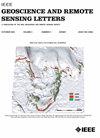分布移位少镜头场景分类的元自监督学习
IF 4
3区 地球科学
Q2 ENGINEERING, ELECTRICAL & ELECTRONIC
引用次数: 5
摘要
少照分类是利用少量的遥感影像样本来识别新的遥感影像类别。然而,目前的方法假设测试数据集与学习先验知识的标记训练数据集共享相同的域。由于遥感图像可能来自不同的领域,因此不可能为每个领域收集一个训练数据集。利用其他领域(源领域)的已有标记数据集来帮助目标数据集(目标领域)分类将是有效的。在这封信中,我们将元学习和自监督学习结合起来进行few-shot分类。具体来说,元学习是在预训练的网络上执行的,用于少量分类。此外,通过对未标记的目标域图像进行训练,利用自监督学习拟合目标域分布。在NWPU、EuroSAT和Merced数据集上进行了实验,验证了该方法的有效性。本文章由计算机程序翻译,如有差异,请以英文原文为准。
Meta Self-Supervised Learning for Distribution Shifted Few-Shot Scene Classification
Few-shot classification tries to recognize novel remote sensing image categories with a few shot samples. However, current methods assume that the test dataset shares the same domain with the labeled training dataset where prior knowledge is learned. It is infeasible to collect a training dataset for each domain, since remote sensing images may come from various domains. Exploiting the existing labeled dataset from another domain (source domain) to help the target dataset (target domain) classification would be efficient. In this letter, both meta-learning and self-supervised learning are jointly conducted for few-shot classification. Specifically, meta-learning is executed over a pretrained network for few-shot classification. Furthermore, self-supervised learning is exploited to fit the target domain distribution by training on unlabeled target domain images. Experiments are conducted on NWPU, EuroSAT and Merced datasets to validate the effectiveness.
求助全文
通过发布文献求助,成功后即可免费获取论文全文。
去求助
来源期刊

IEEE Geoscience and Remote Sensing Letters
工程技术-地球化学与地球物理
CiteScore
7.60
自引率
12.50%
发文量
1113
审稿时长
3.4 months
期刊介绍:
IEEE Geoscience and Remote Sensing Letters (GRSL) is a monthly publication for short papers (maximum length 5 pages) addressing new ideas and formative concepts in remote sensing as well as important new and timely results and concepts. Papers should relate to the theory, concepts and techniques of science and engineering as applied to sensing the earth, oceans, atmosphere, and space, and the processing, interpretation, and dissemination of this information. The technical content of papers must be both new and significant. Experimental data must be complete and include sufficient description of experimental apparatus, methods, and relevant experimental conditions. GRSL encourages the incorporation of "extended objects" or "multimedia" such as animations to enhance the shorter papers.
 求助内容:
求助内容: 应助结果提醒方式:
应助结果提醒方式:


